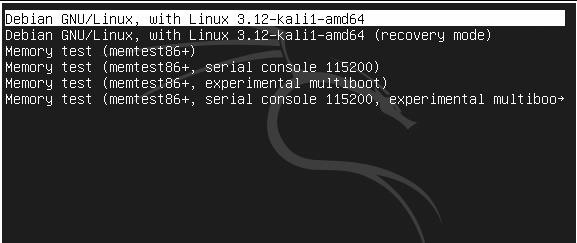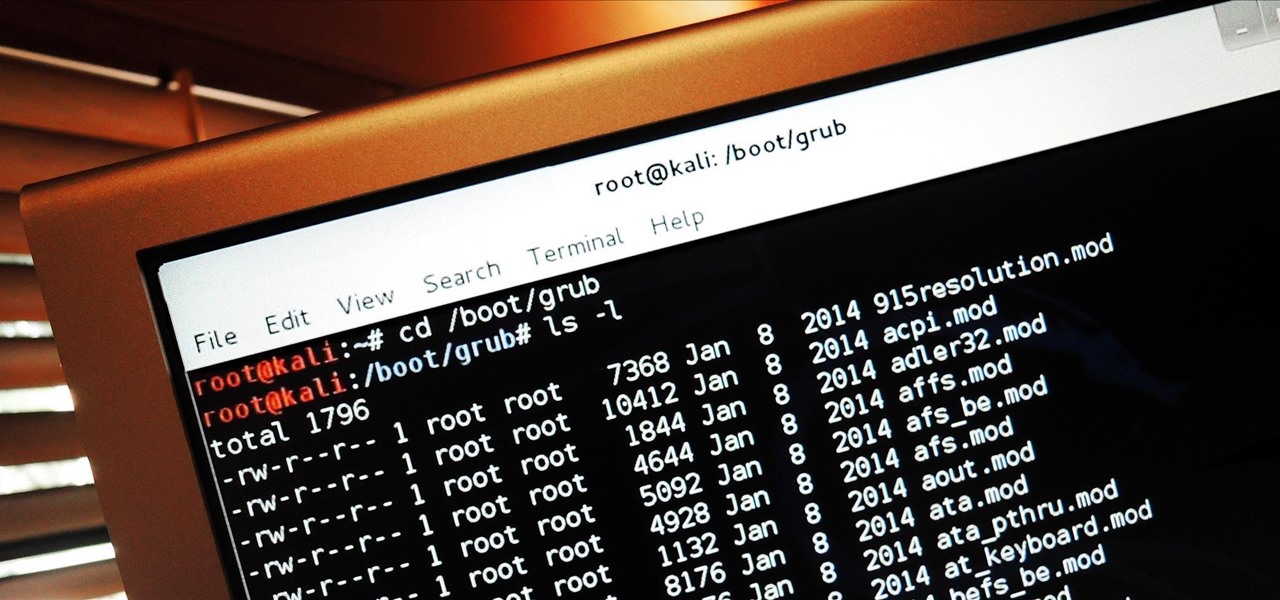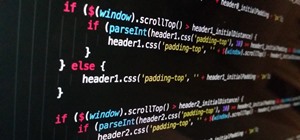Welcome back, my aspiring hackers!
Many of you have installed Kali Linux as a virtual machine (VM) using VMware or VirtualBox, while others have installed Kali (or BackTrack) in a dual-boot system. The drawback to installing these hacking systems as a VM is that it then requires an external wireless adapter (your wireless adapter is piped through the VM as a wired device, eth0), but it makes for a great place to test your hacks while honing your skills.
Using Kali in a dual-boot system doesn't require another wireless adapter and enables you to use the full resources of your physical system without having to go through a hypervisor. In this way, when you need your Windows, you boot into Windows, and when you need Kali, you boot into Kali.
The Bootloader
To be able to run a dual-boot system, you must have a bootloader, and therein lies the issue. The bootloader enables us to choose which operating system we want to boot into. To be comfortable with this arrangement, we need to understand a bit about this thing called a bootloader.
Historically, Linux has used two bootloaders, LILO and GRUB. You may find LILO on some older, legacy systems, but it has largely been replaced by GRUB. GRUB has two versions, the original GRUB and now the new improved GRUB2! Our Kali system comes with GRUB2 by default, so I will focus my attention on this newer version here.
To help you better understand how GRUB works and to help you configure and troubleshoot GRUB, I dedicate these next two Linux tutorials, so stay tuned for Part 22 in my Linux Basics series.
A Little Background on GRUB
GRUB is an acronym for GRand Unified Bootloader. It largely replaces the legacy bootloader found on many older Linux version, LILO. GRUB works by intercepting control of the boot process when the BIOS transfers control to the Master Boot Record (MBR) in the first sector of the primary hard drive. Rather than the MBR then finding the first active partition, GRUB replaces the MBR with its own code that controls which partition is booted.

Step 1: Exploring GRUB
Let's take a look at GRUB2 as it is installed on Kali. GRUB2, unlike the original GRUB, has all its files installed into three main locations. These are:
- /boot/grub/grub.cfg - this is the main configuration file (replaces menu.lst)
- /etc/grub.d - this directory contains the scripts that build the grub.cfg
- /etc/default/grub - this file contains the GRUB menu settings
Now, let's begin by navigating and looking inside the GRUB directory.
kali > cd /boot/grub
kali >ls -l

As you can see, there are many files in this directory, but the one we want to focus on here is the grub.cfg. This is the configuration file in the new GRUB2 that comes with Kali. It replaces the old menu.lst that you will find on the original GRUB. Let's open it with the more command and examine it.

Grub.cfg is basically a script for running and configuring GRUB2. It is generated by the scripts in /etc/grub.d and you generally should NOT try editing it directly (note the warning on the second line of the file).
Step 2: The /Etc/grub.d Directory
Next, let's look at the /etc/grub.d directory.
kali > cd /etc/grub.d
kali > ls -l

As you can see in the screenshot above, this directory has a number of scripts that are run to create the grub.cfg file. Let's look at the key entries here.
- 00_header - this script loads the settings from /etc/default/grub
- 05_debian_theme - this script defines the colors, background, etc.
- 10_linux - this script loads the menu entries
- 20_memtest86 - this script loads the memory tester
- 30_os-prober - this script scans the hard drives for other operating systems
- 40_custom - this is a template for manually adding other menu entries
Step 3: Exploring /Etc/Default/Grub
Now, let's go to the /etc/default directory and look to see what is in this directory.
kali > cd /etc/default
kali > ls -l

This directory contains many files and scripts that configure various daemons or services in Linux. The only one we are interested here is the grub file that I highlighted in the screenshot above. Let's open that file with the more command.
kali > more /etc/default/grub
When we do so, we will see the following output.

This file contains many of the customization parameters for GRUB such as the TIMEOUT and other parameters. If you change anything it this file, you must run "update-grub" for those changes to take effect as it then makes changes to the grub.cfg file.
Step 4: How GRUB2 Works
Before we go any further, I want to take a moment to detail how GRUB2 works. It's quite different than the original GRUB and you need to understand this before you attempt any edits or changes to GRUB2.

The /etc/default/grub file contains customization parameters.
The /etc/grub.d/ directory contains scripts for the GRUB menu information and the scripts to boot the various operating systems. When the update-grub command is run, it reads the contents of the grub file and the grub.d scripts and creates the grub.cfg file.
To change the grub.cfg file, you need to edit the grub file or the scripts under grub.d.
Stay Tuned for More on GRUB...
In my next tutorial in my Linux Basics series, I will show how to edit your GRUB bootloader, so keep coming back, my aspiring hackers!
Just updated your iPhone? You'll find new emoji, enhanced security, podcast transcripts, Apple Cash virtual numbers, and other useful features. There are even new additions hidden within Safari. Find out what's new and changed on your iPhone with the iOS 17.4 update.























15 Comments
I don't really understand why VM need external adapter and dual boot doesn't. I mean ,doesn't VM can access the internet just fine without using external adapter. Can explain further on this ,please?
Using the Bridge network adapter in VM's network setting
Ash:
The virtual machine hypervisor takes the wireless connection to the host machine and "pipes" it to the virtual machine as a wired connection. That would be eth0 in a Linux system. You have an internet connection in your virtual machine, but it is wired connection, not wireless. As a result, to do wireless hacking, you need to add a external wireless adapter.
OTW
Thanks OTW.
hello OTW..a lil problem here...my pc was a trial boot...ubuntu..windows and kali...but for sometime now...grub does not see kali...kali is just gone like that...i see only ubuntu and windows when i start the pc...can you give any help??? after googling and googling and try some solutions still I haven't been able to get the kali partition to come back yet... thanks in advance
My next Linux tutorial will be on editing GRUB2.
Is your GRUB2 or the original GRUB? If its the original, simply edit the menu.lst.
OTW
GRUB version 2...it says..so i guess is grub2...
I recently had to edit a grub entry in Kali Linux. However, Kali 1.0.9 doesn't have the folders and files mentioned in the how-to. What changed? Is it sill possible to edit the boot loader?
Thanks
Actually I personally use Linux but my family members use Windows. In the GRUB menu, I get only 7 seconds time to select the OS. Can I extend it or disable it?
Open /etc/default/grub in a text editor. Change the GRUB_TIMEOUT (about line 7) value to the number of seconds you want and save it . Then, update-grub.
Very good topic OTW
where can I find the second part of the topic "how to edit your GRUB bootloader" ?
Since this is my first comment I would like to thank you OTW for the remarkable series you have made. I have been following them for the last few days and I can tell I have made fast progress since you have compressed the information so finely.
On to the question: might be a bit of a stupid question but , basicly Grub is a replacement for VirtualBox ? I am running mint and have Kali on my virtualbox.
GRUB is a bootloader. It allows you to choose which OS to boot. You can have many operating systems on the same computer and GRUB allows you to choose which you want to boot to.
Wow thank you for the quick response.
Cheers!
Hi OTW,
This is my first commend here at null-byte and I found this site very informative and I would like to thank you for your efforts.
Also I would like to know where I can find the second part of grub tutorial.
Thanks
Dex
Share Your Thoughts